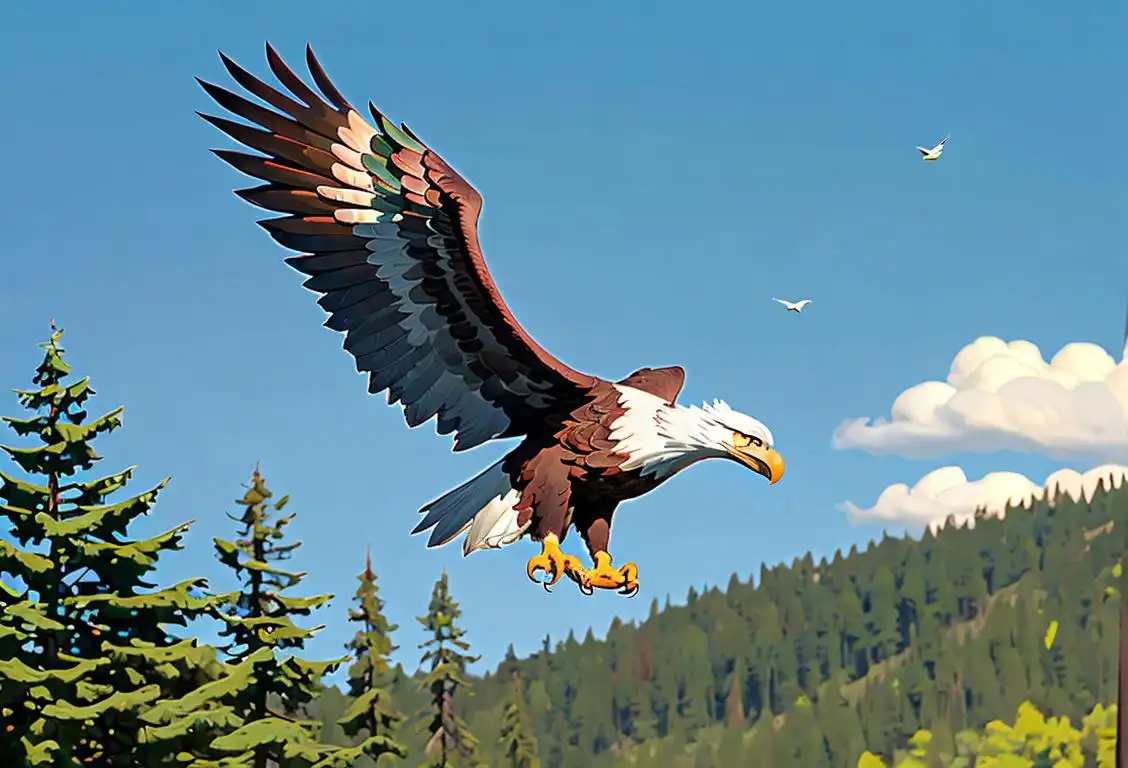National Wetlands Day

Welcome to the wet and wild world of National Wetlands Day! Get ready to dive into a day dedicated to these incredible ecosystems. From their unique wildlife to their crucial role in our environment, there's so much to learn and celebrate.
When is Wetlands Day?
It's national wetlands day on the 2nd February.
The Wonders of Wetlands
National Wetlands Day is a chance to appreciate and raise awareness about these marvelous habitats that are often misunderstood or overlooked. Wetlands are essentially lands saturated with water, either permanently or seasonally, and they come in various forms such as marshes, swamps, and bogs.
These waterlogged wonders serve as essential ecological hotspots, providing habitat for countless species of plants and animals. They act as natural filters, absorbing excess nutrients and pollutants, and play a vital role in maintaining water quality. Wetlands also serve as buffers against floods, helping to prevent disasters in waterlogged areas.
So, how did National Wetlands Day make a splash on the internet? Let's take a journey back to the year when it all began!
A Dive into Internet History
The internet has been buzzing with mentions, shares, and posts about National Wetlands Day. The day gained popularity online, with 126 online mentions detected. The peak day of online activity was on February 2nd, 2021, when wetlands enthusiasts flooded social media with their love for these watery wonders.
People all over the world shared stunning photos of wetlands in their natural glory, highlighting their beauty and importance. They also raised awareness about the threats that wetlands face, such as pollution and habitat destruction, inspiring others to take action and support conservation efforts.
Did You Know?
Did you know that wetlands are incredibly productive ecosystems? Despite covering just a small portion of the Earth's surface, they support an astonishing amount of biodiversity. Wetlands are home to a wide variety of plant species, including unique adaptations like water lilies and cypress knees.
History behind the term 'Wetlands'
1971
Ramsar Convention
In 1971, the Ramsar Convention on Wetlands was signed in Ramsar, Iran. This international treaty aimed to protect and promote the conservation and sustainable use of wetlands worldwide. The convention recognized the ecological importance of wetlands and emphasized their value for biodiversity and human well-being.
1732
Coining the term wetland
The term 'wetland' was first coined in 1732 by Gilbert White, an English naturalist and ornithologist. He used the term to describe areas of land that are covered by water or have saturated soil for a significant part of the year. White noticed that these areas were characterized by unique and diverse ecosystems, with a variety of plants and animals adapted to the waterlogged conditions.
1883
Coined by German scientist Friedrich Heinrich von Seckendorff-Kochsiek
The term 'wetlands' was first coined in 1883 by German scientist Friedrich Heinrich von Seckendorff-Kochsiek. He used the German word 'Feuchtland,' which translates to 'wet land,' to describe areas of land that were characterized by wet and saturated soil conditions. Seckendorff-Kochsiek's study focused on the ecological importance of these areas and their unique flora and fauna.
1934
Ramsar Convention
In 1934, the term 'wetlands' was first used on an international stage. The Ramsar Convention, an international treaty aimed at conserving wetlands, was established. This marked the beginning of a global effort to protect these valuable ecosystems. Wetlands refer to areas where water is the primary factor controlling the environment and the associated plant and animal life.
1879
Introduction of the term 'wetlands'
The term 'wetlands' was first introduced by Swedish scientist and geographer Fredrik Wilhelm Wahlberg in 1879. He used the Swedish word 'våtmark' to describe these areas, which later became 'wetland' in English. This term was used to encompass a variety of aquatic ecosystems characterized by the presence of water at or near the surface for a significant duration of time.
1630
The Origin of the Term
The term 'wetlands' originated in the early 17th century and is derived from the Old English word 'wet' and the Middle English word 'land.' The term was used to describe areas of land that were saturated or filled with water, such as marshes, swamps, and bogs.
1930
The Coined Term
The term 'wetlands' was first coined in 1930 by the international community to describe areas of land that are saturated with water either permanently or seasonally. It was intended to encompass a wide array of wetland types, from marshes and swamps to bogs and shallow ponds.
1500 BC
Ancient civilizations' floodplain awareness
Ancient civilizations like the Egyptians, Babylonians, and Indus Valley people were among the earliest cultures to recognize the importance of floodplains and marshy areas. They understood the ecological benefits of these areas and their role in filtering water and controlling flooding.
1975
Definition of Wetlands
In 1975, the Ramsar Convention provided a global definition of wetlands. According to the convention, wetlands are defined as areas of marshes, fen, peatland, or water, whether natural or artificial, permanent or temporary, with water that is static or flowing, fresh, brackish, or salt, including areas of marine water the depth of which at low tide does not exceed six meters.
2nd century BC
Roman drainage engineering
The Romans were pioneers in engineering and frequently drained wetlands to repurpose the land for agriculture. They built intricate systems of canals and artificial channels to redirect water and improve the productivity of the land. This marked the beginning of human alteration of wetlands on a larger scale.
1905
Wetland classification system
In 1905, the French botanist and ecologist Élie Marchand developed a classification system for wetlands. He categorized wetlands into three types: 'marshes' (dominated by herbaceous plants), 'swamps' (characterized by trees and shrubs), and 'bogs' (composed of peat-forming plants). Marchand's classification laid the foundation for understanding the different types and functions of wetlands.
1960s
International recognition and scientific study
In the 1960s, wetlands gained international recognition for their ecological significance. Scientists began to study wetlands in greater detail, uncovering their vital role in nutrient cycling, water filtration, and as habitats for migratory birds and other wildlife. The Ramsar Convention, an international treaty for the conservation and sustainable use of wetlands, was adopted in 1971, highlighting the growing importance of wetland conservation.
1971
Ramsar Convention defines Wetland
In 1971, the Ramsar Convention officially defined wetlands. According to their definition, wetlands include areas such as marshes, peatlands, lakes, rivers, deltas, tidal flats, and estuaries. This comprehensive definition helped create a unified understanding of what constitutes a wetland, paving the way for further research and conservation efforts.
1969
International Recognition
In 1969, the Ramsar Convention on Wetlands was signed in Ramsar, Iran. This international treaty aimed to promote the conservation and wise use of wetlands worldwide. The convention helped raise awareness about the ecological importance of wetlands and led to their increased recognition as valuable ecosystems.
1905
Recognized as a distinct ecosystem type
In 1905, wetlands gained recognition as a distinct ecosystem type. This recognition was largely due to the pioneering work of Swedish botanist and ecologist Professor Olof Swartz. Swartz studied wetlands extensively in different parts of the world, including Europe and North America, and classified them as a separate and significant ecological system. His research highlighted the importance of wetlands in supporting diverse plant and animal life and their crucial roles in maintaining water quality and regulating hydrological cycles.
1864
Scientific Recognition
In 1864, Swiss botanist A.P. de Candolle first used the term 'wetlands' in a scientific context to describe areas where plants adapted to wet environments thrive. His work contributed to the understanding that wetlands are distinct habitats with unique ecosystems.
1922
Legal Recognition
The term 'wetlands' gained legal recognition in 1922 when the Ramsar Convention was adopted in Iran. The convention aimed to promote the conservation and sustainable use of wetlands globally. It defined wetlands as 'areas of marsh, fen, peatland or water, whether natural or artificial, permanent or temporary, with water that is static or flowing, fresh, brackish or salt, including areas of marine water the depth of which at low tide does not exceed six meters.'
1971
Growing Importance
The importance of wetlands was brought to the forefront in 1971 when the Ramsar Convention came into force. As countries started designating wetlands of international importance, the term 'wetlands' began to gain prominence in environmental discussions and policies. Wetlands were acknowledged for their vital role in water purification, flood control, and supporting diverse plant and animal species.
1987
Montreux Record
In 1987, the Montreux Record was established, which lists wetland sites that are in danger or that have already been lost. This initiative aims to raise awareness about the threats to wetlands and to encourage countries to take necessary conservation measures. The Montreux Record serves as a crucial tool in the ongoing efforts to safeguard wetland ecosystems.
1971
The Ramsar Convention on Wetlands
The Ramsar Convention on Wetlands, also known as the Convention on Wetlands of International Importance, was adopted in 1971. The convention aimed to identify wetlands of global importance and promote their conservation and sustainable use. It was one of the first international environmental agreements and currently has over 170 member countries. The Ramsar Convention has greatly contributed to raising awareness about wetlands and their ecological value, focusing on their biodiversity, water resources, and cultural significance.
1976
World Wetlands Day
World Wetlands Day was first celebrated on February 2, 1976. The aim of this annual event is to raise awareness about the importance of wetlands and to promote their conservation and wise use. February 2nd was chosen as World Wetlands Day to commemorate the signing of the Ramsar Convention.
1991
The Ramsar List of Wetlands of International Importance
In 1991, the Ramsar Convention established the Ramsar List of Wetlands of International Importance. This list identifies and protects significant wetlands around the world, recognizing their ecological, scientific, cultural, and recreational values. The Ramsar List has since grown to include over 2,400 designated sites spanning over 250 million hectares, showcasing the global recognition and conservation efforts for wetlands.
18th century AD
Emergence of the term 'wetlands'
The term 'wetlands' was first coined by European naturalists and scientists in the 18th century. It was used to describe areas that were a combination of marshes, swamps, bogs, and shallow water bodies. The term gained recognition as a distinct ecological entity.
1971
The Ramsar Convention
The Ramsar Convention on Wetlands is an international treaty for the conservation and sustainable use of wetlands. It was adopted in Ramsar, Iran, in 1971, and came into force in 1975. The convention aimed to raise awareness about the ecological importance of wetlands and promote their conservation. It established a framework for identifying and protecting wetlands of international importance, known as Ramsar Sites.
1997
Wetlands Day
In 1997, the Ramsar Convention declared February 2nd as World Wetlands Day. This annual event celebrates the importance of wetlands and raises awareness about their conservation. Each year, various activities and events are organized globally to highlight the ecological value of wetlands and the need to protect them for future generations.
1997
Wetlands recognition by UNESCO
In 1997, wetlands gained global recognition for their ecological significance when they were included in UNESCO's World Heritage Site list. The list recognizes exceptional natural and cultural sites of universal value. Wetland areas, such as the Everglades in the United States and the Okavango Delta in Botswana, have been designated as World Heritage Sites, highlighting their importance for biodiversity and human well-being.
1997
Wetlands of International Importance
The Ramsar Convention designates specific wetlands as 'Wetlands of International Importance' or 'Ramsar Sites.' This designation encourages the conservation and effective management of these wetlands. As of 1997, there were already 730 Ramsar Sites across the globe, covering an area of approximately 58.5 million hectares.
1997
Global Wetland Protection
The adoption of the Ramsar Strategic Plan for the next decade occurred in 1997, signifying a global commitment to the conservation and sustainable use of wetlands. This plan further emphasized the need to integrate wetland conservation into broader land-use planning and considered wetland benefits in socioeconomic contexts. The term 'wetlands' solidified its place as a significant ecological concept.
20th century AD
International recognition and conservation efforts
In the 20th century, there was a growing understanding of wetlands' ecosystem services and their importance for biodiversity. This led to international recognition and conservation efforts. In 1971, the Ramsar Convention was signed, designating wetlands of international importance and promoting their conservation.
1971
Ecological Importance
In 1971, the ecological importance of wetlands became widely recognized with the publication of the influential book 'Man and the Wetlands' by W.B. Ackerman. The book highlighted the diverse range of functions wetlands serve, including water purification, flood control, wildlife habitat, and carbon storage. This increased awareness led to efforts to protect and restore wetland ecosystems.
1992
Inclusion within the United Nations Framework Convention on Climate Change
In 1992, wetlands gained recognition within the international climate change framework. Wetlands were acknowledged for their significant role in carbon sequestration and storing carbon dioxide emissions. This recognition led to the inclusion of wetlands in the United Nations Framework Convention on Climate Change (UNFCCC) as important natural solutions for mitigating climate change. The UNFCCC's adoption elevated the understanding of wetlands as not only ecologically important habitats but also as crucial allies in combating global warming.
21st century
Awareness and conservation efforts
In the 21st century, awareness about the importance of wetlands has continued to grow. Governments, organizations, and individuals have been actively engaged in wetland conservation, restoration, and management to preserve these valuable ecosystems. Wetland conservation not only helps protect biodiversity but also contributes to mitigating the impacts of climate change by storing carbon and acting as natural buffers against flooding and coastal erosion.
2020
World Wetlands Day celebrates 50 years
In 2020, the world celebrated the 50th anniversary of World Wetlands Day. Observed on February 2nd, this day raises global awareness about the importance of wetlands and their conservation. The anniversary served as a reminder of the progress made in wetland conservation efforts over the years, as well as the challenges that still persist. World Wetlands Day continues to inspire actions towards the sustainable management and protection of wetland ecosystems worldwide.
2005
Millennium Ecosystem Assessment
In 2005, the Millennium Ecosystem Assessment, an extensive review of the world's ecosystems, recognized the vital role of wetlands in providing ecosystem services. Wetlands were identified as important for regulating water flows, filtering pollutants, and supporting biodiversity. The assessment highlighted the need for their protection and sustainable use to ensure the well-being of humans and the planet.
2002
Ramsar Strategic Plan
In 2002, the Ramsar Convention adopted a new strategic plan called 'The Ramsar Plan for the Wise Use of Wetlands.' This plan provides a framework for countries to assess and manage their wetlands sustainably. It emphasizes the wise use of wetlands, taking into account the ecological, economic, cultural, and social aspects associated with these ecosystems.
2020
Wetlands and climate change
In recent years, wetlands have gained increased attention due to their role in mitigating climate change. Wetlands store vast amounts of carbon dioxide, acting as important carbon sinks. They also provide natural flood protection, help regulate water quality, and support diverse ecosystems. Recognizing their importance, initiatives like the UN's Sustainable Development Goals and the Paris Agreement emphasize the conservation and restoration of wetlands as essential for climate resilience.
2012
World Wetlands Day
World Wetlands Day was established on February 2, 2012, by the Ramsar Convention to celebrate wetlands globally and raise public awareness about their importance. This annual event encourages governments, organizations, and individuals to organize activities that promote wetland conservation and educate people about the value of wetlands for sustainable development.
1997
World Wetlands Day
In 1997, World Wetlands Day was established to raise global awareness about the value of wetlands and promote their conservation. It is celebrated annually on February 2nd to commemorate the adoption of the Ramsar Convention. The day serves as a reminder of the ecological significance and cultural importance of wetlands worldwide.
Did you know?
Did you know that wetlands are incredibly productive ecosystems, supporting an astonishing amount of biodiversity in their watery embrace?Tagged
awareness nature wildlife conservation environment ecosystemFirst identified
2nd February 2016Most mentioned on
2nd February 2021Total mentions
126Other days
Wetlands Day
Threatened Species Day
Cougar Day
American Eagle Day
Elephant Day
Penguin Day
Tree Planting Day
Tree Day
Badger Day
Public Lands Day








